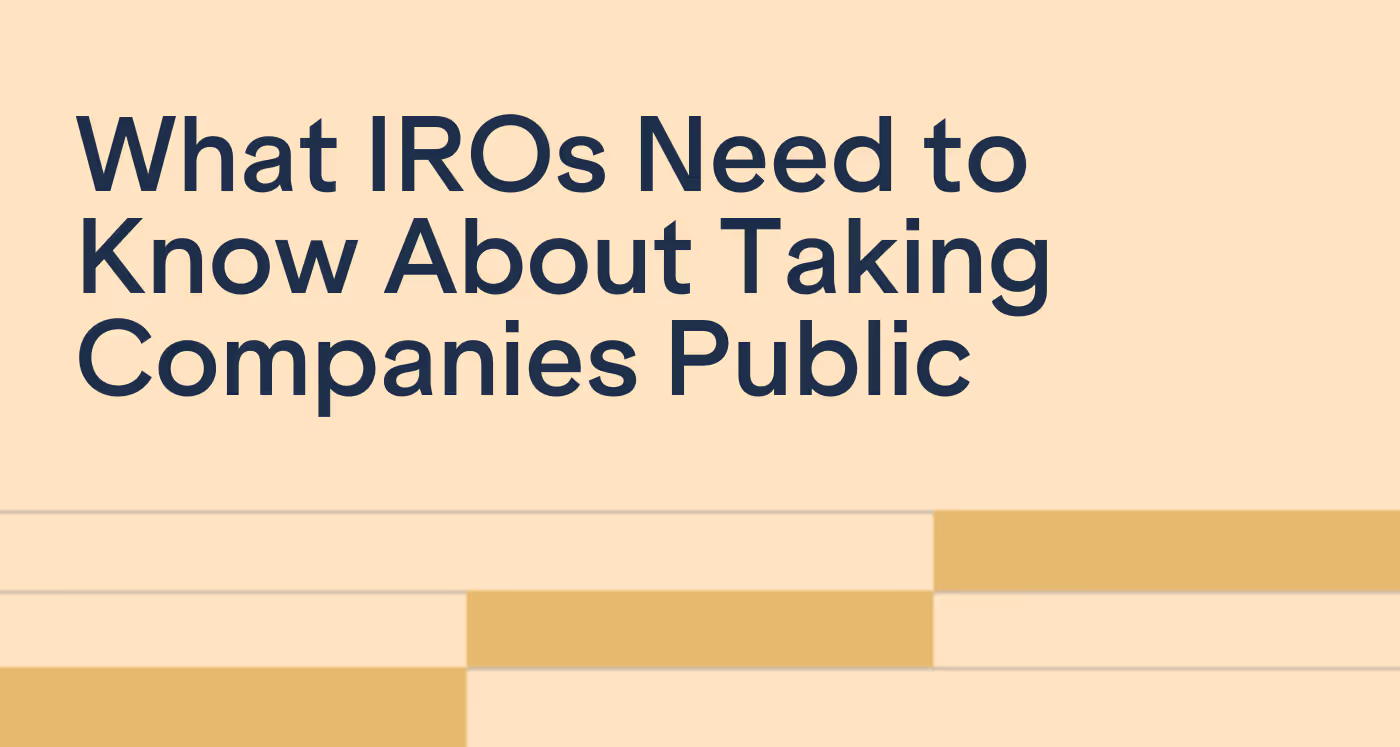
How to Build Effective Investor Targeting and Outreach Strategies for Small-Mid-Cap Companies
Learn how seasoned IR veterans are executing targeting strategies for small-mid-cap companies.

The timing of a company’s initial public offering is a crucial factor that often determines the magnitude of its success or failure. Companies often wait until “market conditions improve” or complete a major acquisition to ensure investors are underwriting appropriate value for the business. Conversely, these same reasons (in addition to many others) can be why a company chooses to stay private for longer than planned.
While the decision to go public is made on a case-by-case basis, there are certain factors to be mindful of that may signal the right time to pursue an IPO. These can include:
• Industry growth outlook has materially improved: Having sector growth tailwinds at your back can be a distinct positive for a prospective IPO candidate. Further, demonstrating growth rates above your industry shows that you are growing fast while also capturing market share—an important combination for investors considering investing in a new business/industry.
• Strong performance from recent IPOs in your sector: Recent IPOs in your space that have been well received by the market should instill confidence that the public markets are ready for your company.
• Access to public capital required to support next leg of growth: If the business has a considerable organic or inorganic growth opportunity in front of it but requires additional capital (beyond what is available in the private markets and on more favorable terms) to support these initiatives, then an IPO may be an effective way to achieve this.
Staying private also has its benefits, and there are certain markers management can monitor to determine if remaining privately held is in the company’s best interest. These can include:
• Volatile market conditions and weak performance from recent IPOs: A volatile market environment and poor performance from recent IPOs (particularly those in the same sector as you) are typically clear signs that maximizing the value of your business may prove challenging in the current environment and that staying private is likely to be a more suitable short-term option.
• Post-IPO capital structure may screen as unappealing to public market investors: Though IPOs provide additional funding and naturally serve to reduce leverage, there are certain cases where the capital structure of private companies may still screen as broadly unappealing to public market investors if leverage and capital structure complexity are significantly higher than accustomed to. In these instances, companies should consider remaining private until those areas are adequately addressed.
Material change to fundamental outlook that is unlikely to remedy itself in the near term: Examples of this could include the loss of a key customer, a legal or patent dispute that threatens competitive standing, a material deterioration in the growth outlook (both industry and company-specific), a major acquisition that fails to close or the loss of key personnel. If something like this occurs during the IPO process, it likely makes sense to remain private until resolving the issue.
• Maintaining the status quo is an equally viable solution: If a company’s ability to accomplish its strategic objectives would remain unchanged whether publicly traded or privately held, then keeping the status quo and staying private is a logical decision that avoids the costs and pressures of going public.
Due to the illiquidity premium associated with private companies and the perceived riskiness of private market investing, expected returns and the cost of capital for private businesses are typically higher than for public ones, with all else equal. As such, deciding to go public versus staying private has important implications for your cost of capital, how you invest internally/externally and ultimately how your business is valued.
For newly public companies, improvement in liquidity and access to broader sources of capital lower the business’s overall cost of capital by accessing financing on more favorable terms. However, the company exposes itself to a beta that can fluctuate more rapidly than in the private markets and is subject to broader market conditions. Beta is a key input into the capital asset pricing model (CAPM) calculation, so understanding how the decision to list publicly can influence your beta (and ways to mitigate against it) plays a critical role in determining where your cost of capital sits.
For private companies, deciding to stay private can impact your company’s cost of capital and allocation decisions differently. For example, raising capital on favorable terms is likely to be more challenging (and likely more expensive) for a private company during economic uncertainty. It may force the business to rethink the aggressiveness of its capital allocation decisions. Conversely, due to the infrequent nature of private market valuations, these companies are unlikely to see short, however significant shocks and market drawdowns impact their valuations and cost of capital the same way a publicly traded company might.
Two major hurdles newly minted public companies face are the increase in time and cost associated with being public. Having a high-quality investor relations (IR) software provider in place is often mission-critical for monitoring shareholder activity and ensuring the time spent interacting with current and new investors is optimized. In many cases, having a quality solution in place can be a fraction of the cost of hiring a full-time employee and significantly reduce the costs and distractions associated with IR, which frees up management’s time to run the business and build innovative products and services.
It is key to remember that the ultimate objective of capital markets (private and public) is to ensure that capital flows to areas where people will most effectively and efficiently utilize it. It is important for companies to understand that they will need to deal closely with investors and stakeholders, regardless of their direction, to ensure they use the capital optimally. Therefore, having the right solution in place specifically designed to assist with that outcome has never been more critical.
The information provided here is not investment, tax or financial advice. You should consult with a licensed professional for advice concerning your specific situation.
See more from Forbes' Finance Council

Learn how seasoned IR veterans are executing targeting strategies for small-mid-cap companies.

Elizabeth Librizzi breaks down the secrets of buy-side corporate access to help investor relations professionals utilize buy-side firms.

What IROs Need to Know About Taking Companies Public: Insights from award winning investor relations thought leader Catherine Buan.